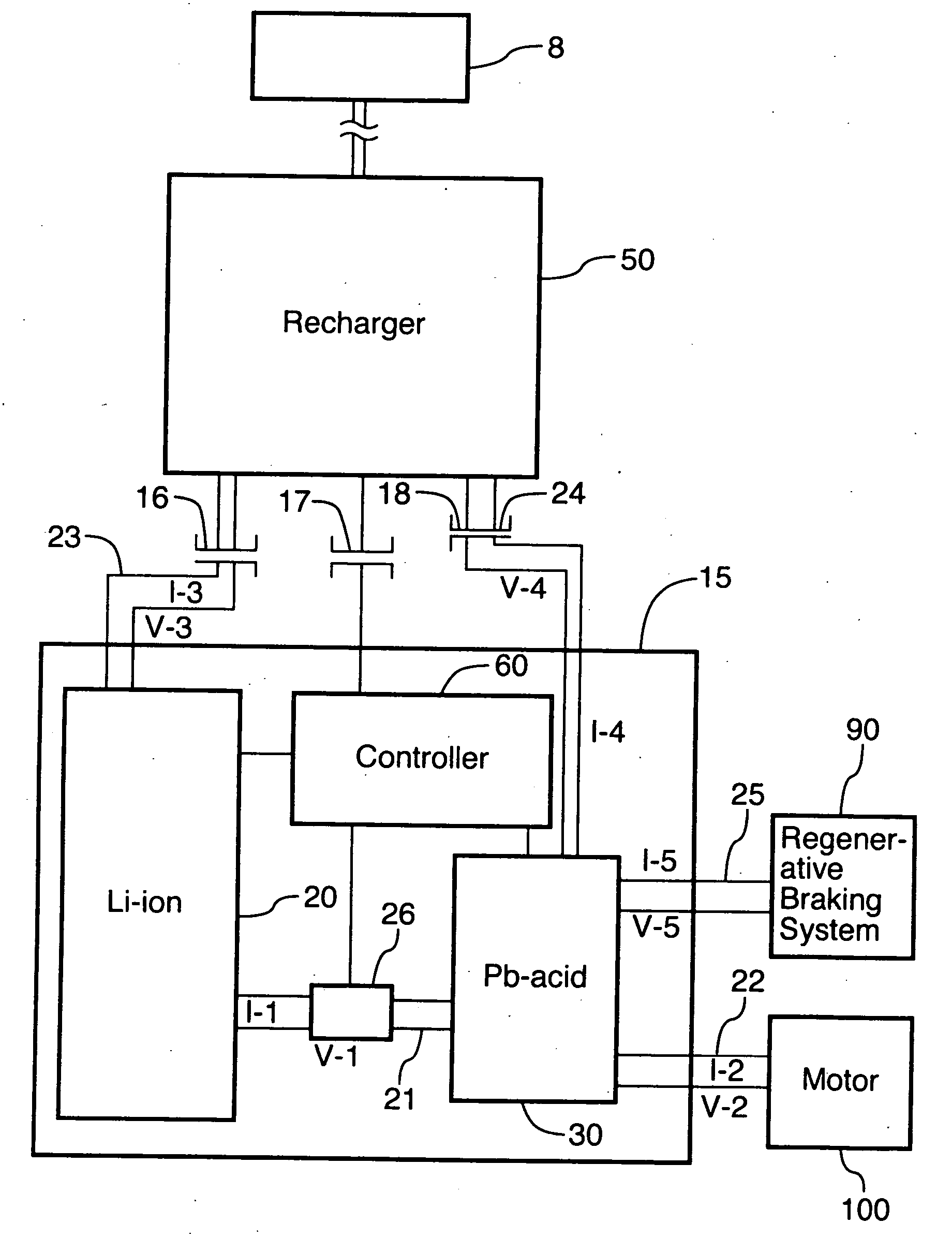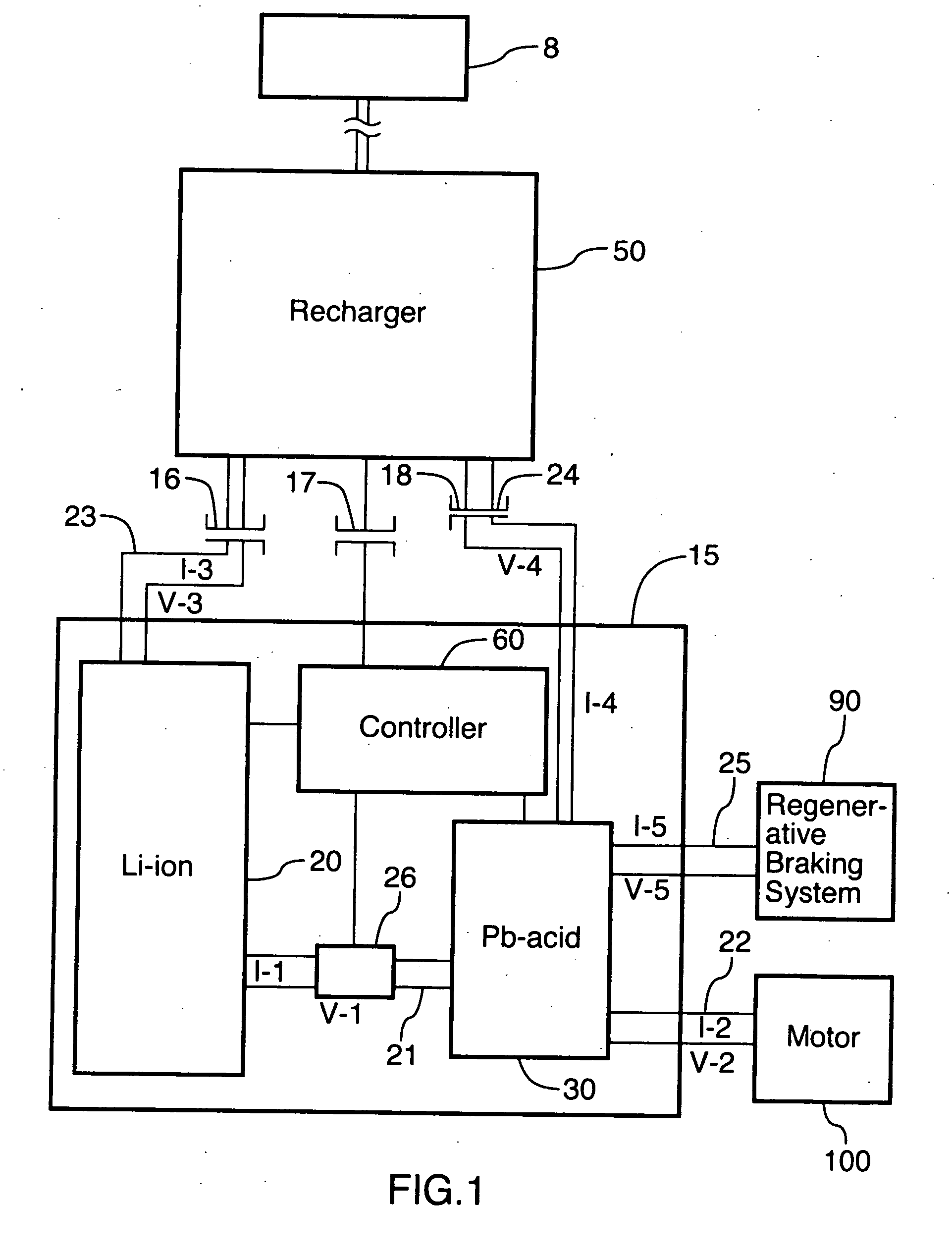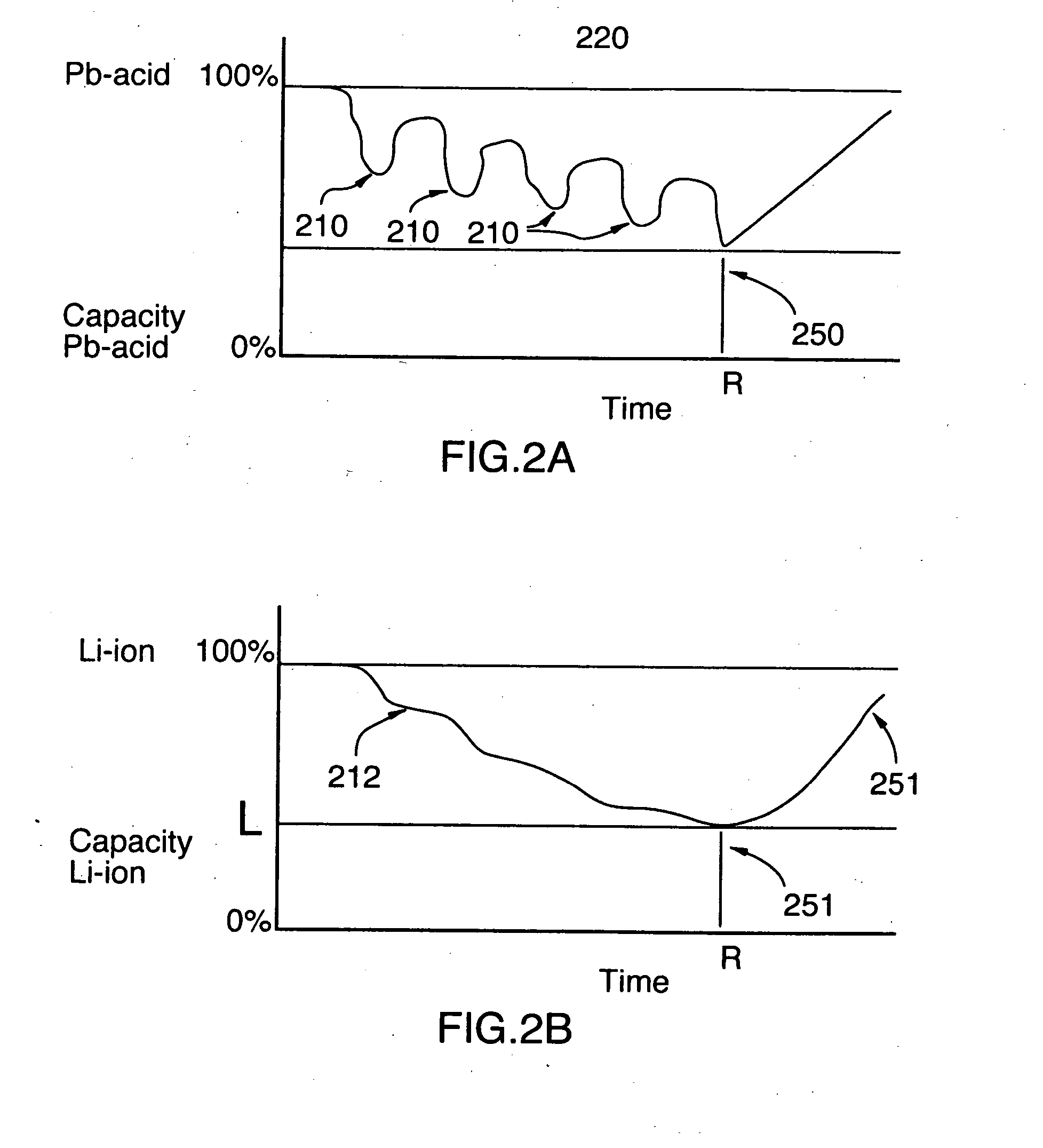Energy storage device for loads having variabl power rates
a technology of energy storage and load, applied in the direction of dynamo-electric converter control, secondary cell maintenance/maintenance, maintenance/maintenance of primary cells, etc., can solve the problems of lithium based batteries not being able to provide large bursts of power, large volume of energy provided per unit volume, and relatively large mass needed to store a substantial quantity of energy. , to achieve the effect of improving the life of the power battery, high specific energy, and high energy density
- Summary
- Abstract
- Description
- Claims
- Application Information
AI Technical Summary
Benefits of technology
Problems solved by technology
Method used
Image
Examples
Embodiment Construction
[0037] As described herein above, in one preferred embodiment of the invention, an energy storage device comprising an energy battery connected to a power battery is provided. The energy battery has a high energy density and a high specific energy so that it can easily and efficiently store a large amount of energy. The energy battery is also rechargeable from external sources. The energy battery is capable of providing a relatively steady energy output, but may have a relatively low current level. In other words, the energy battery performs the principal function of efficiently storing a large amount of energy, without having a great deal of mass or occupying a great deal of space, but may not be able to provide high or variable current levels or variable power output.
[0038] By contrast, the power battery is designed to have variable power output and to be capable of providing short high current pulses. For example, the power battery will be capable of providing high bursts of pow...
PUM
| Property | Measurement | Unit |
|---|---|---|
| voltage | aaaaa | aaaaa |
| voltage | aaaaa | aaaaa |
| temperature | aaaaa | aaaaa |
Abstract
Description
Claims
Application Information
 Login to View More
Login to View More - R&D
- Intellectual Property
- Life Sciences
- Materials
- Tech Scout
- Unparalleled Data Quality
- Higher Quality Content
- 60% Fewer Hallucinations
Browse by: Latest US Patents, China's latest patents, Technical Efficacy Thesaurus, Application Domain, Technology Topic, Popular Technical Reports.
© 2025 PatSnap. All rights reserved.Legal|Privacy policy|Modern Slavery Act Transparency Statement|Sitemap|About US| Contact US: help@patsnap.com



